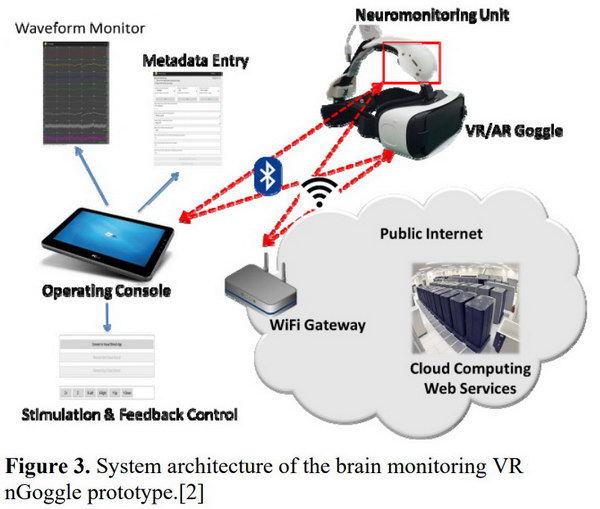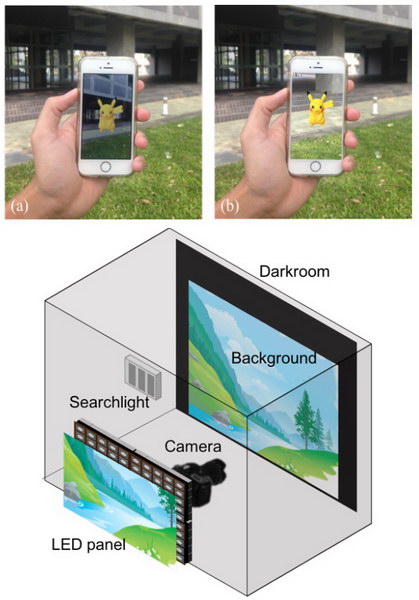(Credit: M. Brennesholtz)
Meko’s Matt Brennesholtz (i.e. me) opened the AR/VR track at the SID technical symposium with paper 3-1 titled “VR Standards and Guidelines.” This invited paper was well received and had a standing-room only crowd of more than 500 attendees. It was largely based on four Display Daily articles I have posted over the last year, so regular DD readers should already be familiar with much of the material. The articles were:
- Virtual Reality: Defragmenting the Market (16 May 2018)
- The VR Ecosystem Develops (13 Dec. 2017)
- VR Guidelines from the VRIF (20 Sept 2017)
- VR/AR Standards – Are We Confused Yet? (June 2017)
One comment that I got at the author interviews was that the standards I discussed were largely software and content standards, not display standards. This I freely admit is true – the only hardware standard I discussed at all was the DisplayPort interface. Unfortunately for people like me and many Display Daily readers with a technical background in display technology, content is now king. If your display cannot show the available content, it doesn’t really matter how good the display is, no one is going to buy it. To show available content, you need to accept content formatted according to current content standards.
While paper 23-3 titled “Deep Tone-mapped HDRNET for High Dynamic Range Image Restoration” from Gwon Hwan An and his colleagues at Sogang University was put on the AR/VR track, the technique they describe would apply to any display type. They used a neural network, deep learning system to convert standard dynamic range (SDR) images to high dynamic range (HDR) images. Training was done using the EMPA media technology dataset. Their algorithm is said to produce better output HDR imagery than previous SDR to HDR conversion algorithms.
The Cyclopean Eye is a virtual eye located somewhere between a person’s left and right eyes. This the point from which humans perceive the 2D version of the world around them. In rendering VR content, the normal assumption is that the Cyclopean Eye is half way between the left and right eyes. Data shows that this assumption is not normally correct. In the paper (30-1) “Cyclopean Eye based Binocular Orientation in Virtual Reality” Zhenping Xia from the Suzhou University of Science and Technology and his colleague Eli Peli from Harvard Medical School show that rendering VR content from the position of the actual Cyclopean Eye improves the realism of the images, compared to the nominal position of the eye. Well, maybe.
 (Source: SID 2018 paper 37-4)
(Source: SID 2018 paper 37-4)
The Neuromonitoring Goggle (nGoggle) was described in paper 37-4 in a paper titled “Intelligent Virtual-Reality Head-Mounted Displays with Brain Monitoring and Visual Function Assessment” from John K. Zao and his colleagues from National Chiao Tung University, University of California, San Diego and nGoggle, Inc. This unit is not “virtual reality” in the commonly used sense although it uses a VR HMD as part of the system. Instead, it is used for assessing the human visual system (HVS). One test given it the paper that the unit can perform is a test for glaucoma at a much lower cost than the cost of a conventional test. This allows more frequent testing and better detection and monitoring of the condition. The unit was also used to evaluate the HVS response to flicker. While the prototype was based on an Oculus HMD and an external neuromonitoring unit, nGoggle is in the process of developing a dedicated, integrated unit.
 Top: An AR application where color and brightness correction is needed. Bottom: An example of digital camouflage where color and brightness correction are critical. (Source: SID 2018 paper 79.3)
Top: An AR application where color and brightness correction is needed. Bottom: An example of digital camouflage where color and brightness correction are critical. (Source: SID 2018 paper 79.3)
Paper 79.3, “Color Adjustment for Video-see-through AR and Camouflage Application” and by Yu-Kai Chen and his colleagues at National Chiao Tung University, discussed AR and camouflage applications where it was important to match the computer generated image to the real world in both color and luminance. They showed this was possible, as long as the display had sufficient range of brightness to match the ambient light. I find their camouflage application interesting and they showed photos showing the effectiveness of the system. Of course, as shown, it will only work from a single vantage point. Now, if they replaced the camera with a light field camera and the LED panel with a light field display, the camouflage system would work for any observer within the field of view of the light field display. Now that would be cool!
 (Source: SID 2018 paper 79-4)
(Source: SID 2018 paper 79-4)
Paper 79-4 was titled “A Plastic Electrochromic Dimming Device for Augmented Reality Glasses” and was presented by Akio Machida and his colleagues from Sony. While vendors, including presumably Sony, are working to increase the brightness of AR HMDs so they can compete with high ambient light conditions, the very high brightness levels required for dealing with the ambient light on a sunny day is just not available yet, at least not in consumer AR HMDs. An alternative is to reduce the ambient light with a sunglass-like system. Machida discussed an electrochromic dimming device (ECD) that did exactly that. While most ECDs are sandwiched between glass substrates, Sony developed one that could be sandwiched between plastic layers and then curved, like the curvature on sunglasses. This ECD would then be part of the HMD with the AR imaging system. The ECD panel showed in the paper was roughly the size and shape of a sunglass lens and dimmed the entire visual FOV, not just the area where the AR content was displayed. As can be seen in the photo above, this made the information displayed on the AR system much more visible against the high-ambient background.
Strictly speaking, poster paper P-101 titled “Micro-Optical Systems for Micro-LED Displays” from Graham Woodgate and his colleague at Optovate Limited wasn’t an AR/VR paper even though it was on the AR/VR track. Instead, it discussed the manufacturing of the pixel-level optics needed for a pixelated micro- or mini-LED. One of the applications of such a display would be for a see-through AR display. Micro-LEDs work in this application because they have far higher brightness than OLED microdisplays and can provide simpler optical systems than LCD, LCoS or DLP projection. While micro-LED microdisplays cannot be used in HMDs (or virtually and other application) today, there is intense research into the technology and they may be usable several years from now. In a shorter-term application, the authors anticipate mini-LEDs will be used in LCD backlights. (see Optovate Comes out of Stealth Mode and Optovate Ltd Reveals Further Details Of Its Micro-LED Technology ) –Matthew Brennesholtz

